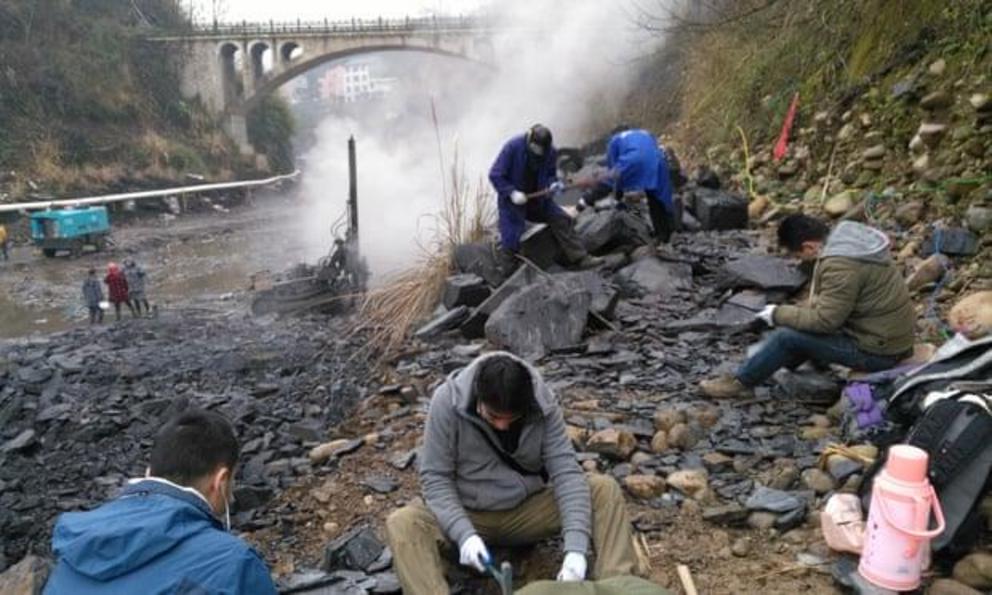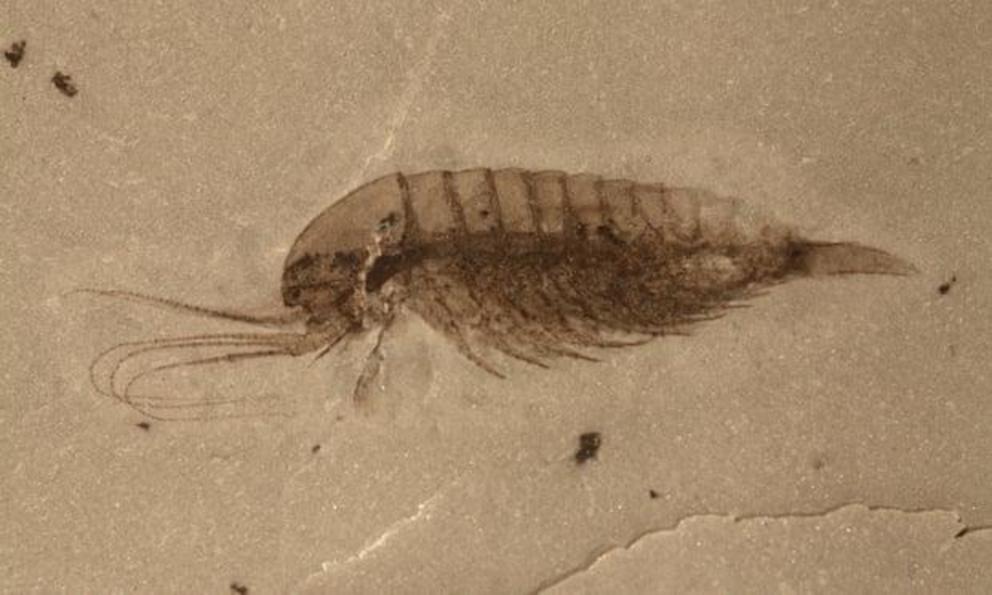'Mindblowing' haul of fossils over 500m years old unearthed in China
A “mindblowing” haul of fossils that captures the riot of evolution that kickstarted the diversity of life on Earth more than half a billion years ago has been discovered by researchers in China.
Paleontologists found thousands of fossils in rocks on the bank of the Danshui river in Hubei province in southern China, where primitive forms of jellyfish, sponges, algae, anemones, worms and arthropods with thin whip-like feelers were entombed in an ancient underwater mudslide.
The creatures are so well preserved in the fossils that the soft tissues of their bodies, including the muscles, guts, eyes, gills, mouths and other openings are all still visible. The 4,351 separate fossils excavated so far represent 101 species, 53 of them new.
“It is a huge surprise that such a large proportion of species in this fossil assemblage are new to science,” said Robert Gaines, a geologist on the team from Pomona College in Claremont, California. The fieldwork was led by Xingliang Zhang and Dongjing Fu at Northwest University in Xi’an, 700 miles (1,127km) south-west of Beijing.

The fossilised organisms date back to 518m years ago when life on Earth experienced a massive burst in diversity known as the Cambrian explosion. The event, at the dawn of animal life, marked the arrival of all manner of unusual creatures. Many went extinct as evolutionary dead-ends, but others went on to form the first sturdy branches of the tree of life.
Scientists still debate what prompted the Cambrian explosion. One idea is that life stumbled upon the genetic tools to build animal bodies, but the onset of predation, which triggered an evolutionary arms race, shifts in tectonic plates, and a surge of nutrients into the oceans, may also have played a part.
Until now, the most impressive fossils from the Cambrian explosion were those found in the Burgess Shale, a 508m-year-old rock formation in Canada, and in the 518m-year-old Chengjiang formation in China. The new fossils, found near the junction of the Danshui and Qingjiang rivers in Hubei province in China, provide a snapshot of a radically different ecosystem of organisms that lived around the same time.

